Plants that are native to your local ecosystem will be easier for you to care for, require less maintenance, and are good for local animals and insects, and the environment. Whether you are a seasoned gardener or new to the game, you can benefit from using native plants in your garden and landscape.
You can use our Michigan native plants list to help you get started, but we’ll also explain the benefits of choosing native plants over other options. There are native trees, shrubs, flowers, and more – so there’s something for every garden or landscape need you may have.
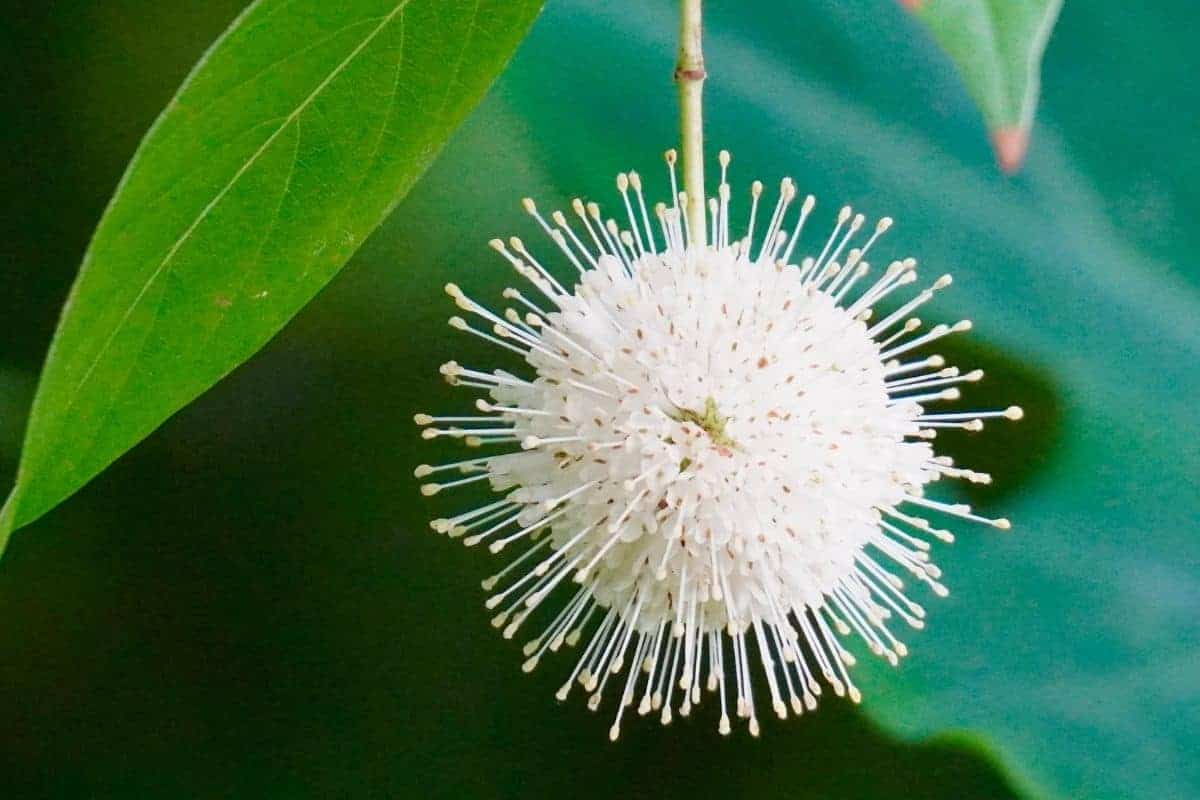
Michigan Native Plants List
Michigan has very cold winters and native plants are the best choice for your garden or landscape because they have evolved to survive in these conditions that are already present in the state.
Make sure not to plant any of these invasive Michigan species.
1. Yarrow (achillea millefolium)
Yarrow grows about 2-3 feet high and blooms in early summer. It likes full sun to light shade and dry-mesic soil. For it to do its best, plant your yarrow in a place that gets full sun. This will encourage more compact growth and many flowers within the plant. It likes hot, dry conditions with well-draining soil. Do not plant in a part of your landscape that gets soggy or has standing water.
2. Yellow giant hyssop (Agastache nepetoides)
Yellow giant hyssop grows from 4-6 feet high, blooms in the summer, and likes mesic soil. It will do well in full sun to light shade. Bees are drawn to the flowers as well as butterflies. This plant is in the mint family and when the leaves are crushed, they put off a minty aroma.
3. Swamp agrimony (agrimonia parviflora)
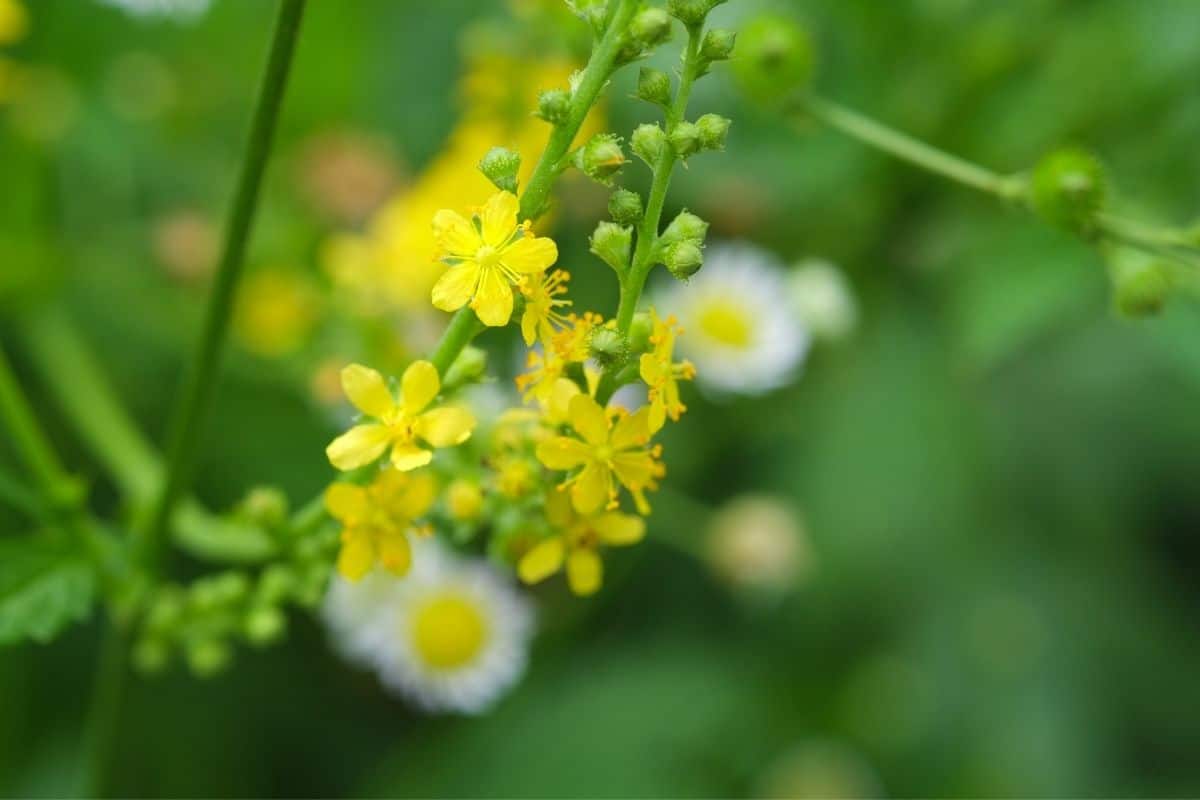
Swamp agrimony is one of a couple of types of agrimony native to Michigan (tall agrimony is as well). It grows from 3-4 feet tall and blooms in the summertime. It likes mesic to wet soil and full sun to light shade. As the name suggests, it does best in damp soils like marshy or boggy areas.
4. Wild columbine (aquilegia canadensis)
Wild columbine is another great choice to consider. It grows about 2-3 feet tall and blooms in spring. It likes part shade to full sun and mesic to dry-mesic soils. The large, showy flowers on this plant will attract bees, birds, butterflies, as well as other pollinators. They will make a beautiful addition to your landscape.
5. Poke milkweed (asclepias exaltata)
There are several types of milkweed that are native to Michigan and poke milkweed is one of them. You can also find swamp milkweed and common milkweed native here as well.
Poke milkweed grows about 3-5 feet tall and blooms in the summer. It likes shade to part sun and dry-mesic soil conditions.
6. Smooth aster (aster laevis)
Smooth aster likes full sun and mesic to dry-mesic soil. It grows 3 to 5 feet tall and blooms in the fall. There are many other types of aster that are native to Michigan too, including:
- smooth swamp aster
- New England aster
- sky blue aster
- calico aster
- arrow leaved aster
- short’s aster
7. Tall bellflower (campanula americana)
Tall bellflower is another great native for your garden. It blooms in late summer and grows to about 3-5 feet tall. It likes wet-mesic to mesic soil and light shade to part sun. Be sure to avoid planting in parts of your lawn that get full sun for long hours of the day.
8. Button bush (cephalanthus occidentalis)
Button bush likes full sun to part shade, mesic to wet-mesic soils, and can grow 5-8 feet tall. It blooms in summer. This ornamental is also a honey plant, which is why it is sometimes called honeybells or honey balls.
Ducks, water birds, and shorebirds will eat the seeds that it produces. It will attract native birds and butterflies and it’s low maintenance and cold tolerant.
9. Woodland sunflower (helianthus divaricatus)
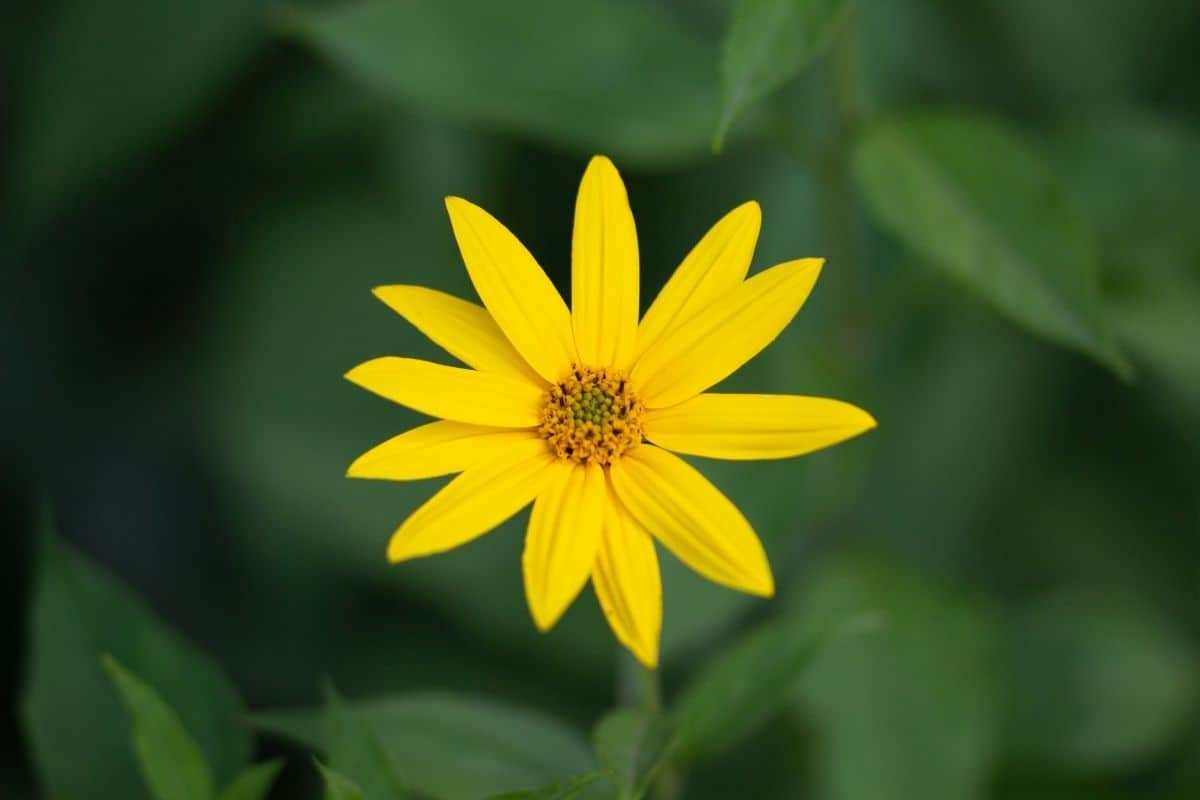
Woodland sunflowers look beautiful in any landscape and can grow from 3-4 feet high. They bloom in late summer, and they like part shade to full sun.
The nectar and pollen of this flower will attract many pollinators, making it a great choice for the ecosystem. They’re also very pretty to look at. It’s low maintenance once established in the right conditions.
10. Southern blue flag (iris virginica)
This is a pretty, delicate-looking flower that blooms in late spring. It likes full sun to part sun, and mesic to wet soil. It grows about 2-3 feet high. This is a wetlands species of iris and it’s mostly found in coastal areas. It has a very distinguishable look to the non-fragrant flowers.
11. Northern blazing star (liatris scariosa)
Northern blazing star is one type of blazing star that is native to Michigan. You can also find rough blazing star and marsh blazing star native in this state. Northern blazing star blooms in summer and grows from 2-3 feet tall. It likes full sun and medium to dry soil
12. Cardinal flower (lobelia cardinalis)
The scarlet red color of the cardinal flower is sure to make a statement in your garden. It blooms in late summer and can grow from 2 to 6 feet high. It likes wet-mesic soil and light shade to part sun.
Cardinal flowers are part of the bellflower family, and the showy red flowers attract birds, butterflies, and bees. The flowers also have a nice aroma. This plant is toxic if eaten.
13. Monkey-flower (mimulus ringens)
Monkey-flower blooms in summer and grows to 2-3 feet high. It likes full sun to part sun and mesic to wet-mesic soil. This is a weak-stemmed perennial with pretty purple flowers. It gets its common name because the flowers are shaped a bit like monkey faces.
14. Sundrops (Oenothera fruticosa)
Sundrops bloom in early summer and grow from 1 ½ to 2 1/1 feet tall. They like full sun and mesic to dry-mesic soil. The yellow petals of sundrops open up in the sun and the perennial roots form a dense cluster of upright stems. They are low maintenance and look great in any garden or landscape.
There are many more native plants to choose from that didn’t quite make our list today: you can search the database here for specific plants or to learn more. If you’d like to learn more about what works best in your area, you can check with local nurseries. If you want to get very specific with what will work best for your property, you can schedule a landscaping audit/inspection.
An expert will come out to assess the lighting, soil conditions, existing plants, and other details to help you plan the best native landscape possible. You can also look for resources from your county’s conservation district about which plants will be good for your garden. A good place to start is the Michigan State University Natural Features Inventory.
Why go native with your garden?
You may be wondering why it’s important to go native. Once you begin to study the benefits of native plants, it will make a lot more sense to you. Over the years, as people have moved into areas, local wildlife has been pushed out. Many native plants have been cut down or uprooted.
When we plant native gardens and landscapes, we are bringing those native habitats back. This is good for the local ecosystems and it also means it is easier to care for gardens that thrive in the climate and weather conditions that Michigan has already.
Native Flowers Of Other States
Michigan native plants list FAQ
If you have questions about this subject, you’re not alone. Here are some common questions other people have had on the topic.
Where can I buy native plants locally?
You should look for a local nursery that specializes in native plants. Before a nursery can be considered a specialty in natives, it should carry a minimum of 25 species that are classified as native to Michigan. You can search for Michigan native plant vendors online also.
What shrubs are native to Michigan?
If you’re looking for native shrubs to use in your landscaping, consider the following:
- bearberry
- pussy willow
- speckled adler
- prairie willow
- black chokeberry
- American elderberry
- New Jersey tea
- Michigan holly
- common witch hazel
- black haw viburnum
Michigan has many large, medium, and small shrubs that are native to the state so you’re sure to find the best shrubs to meet your needs.
How many species of plants are in Michigan?
You might be surprised to know there are actually over 2,600 plant species found in the state of Michigan. A large percentage of those are native plants.
How can I start a native garden at home?
Starting a native garden at home does not have to be difficult. It all starts with making the choice to do it and then learning a bit more about your landscape. The University of Michigan has the Michigan Flora Database which allows you to put in the county you live in, and it will tell you all the native plants in your county.
What are the best native plants for birds?
If you’re looking to attract birds to your garden for birdwatching, or if you just want to provide a nice natural habitat for the birds in your area, you should plant shrubs and trees that bloom early like willows, elm, hickory, and red oak in the spring.
And you can plant shrubs and trees that produce autumn berries in the fall. Good examples include dogwood, viburnum, red cedar, and elderberry. The Michigan Audubon Society has more information about native plants for birds.
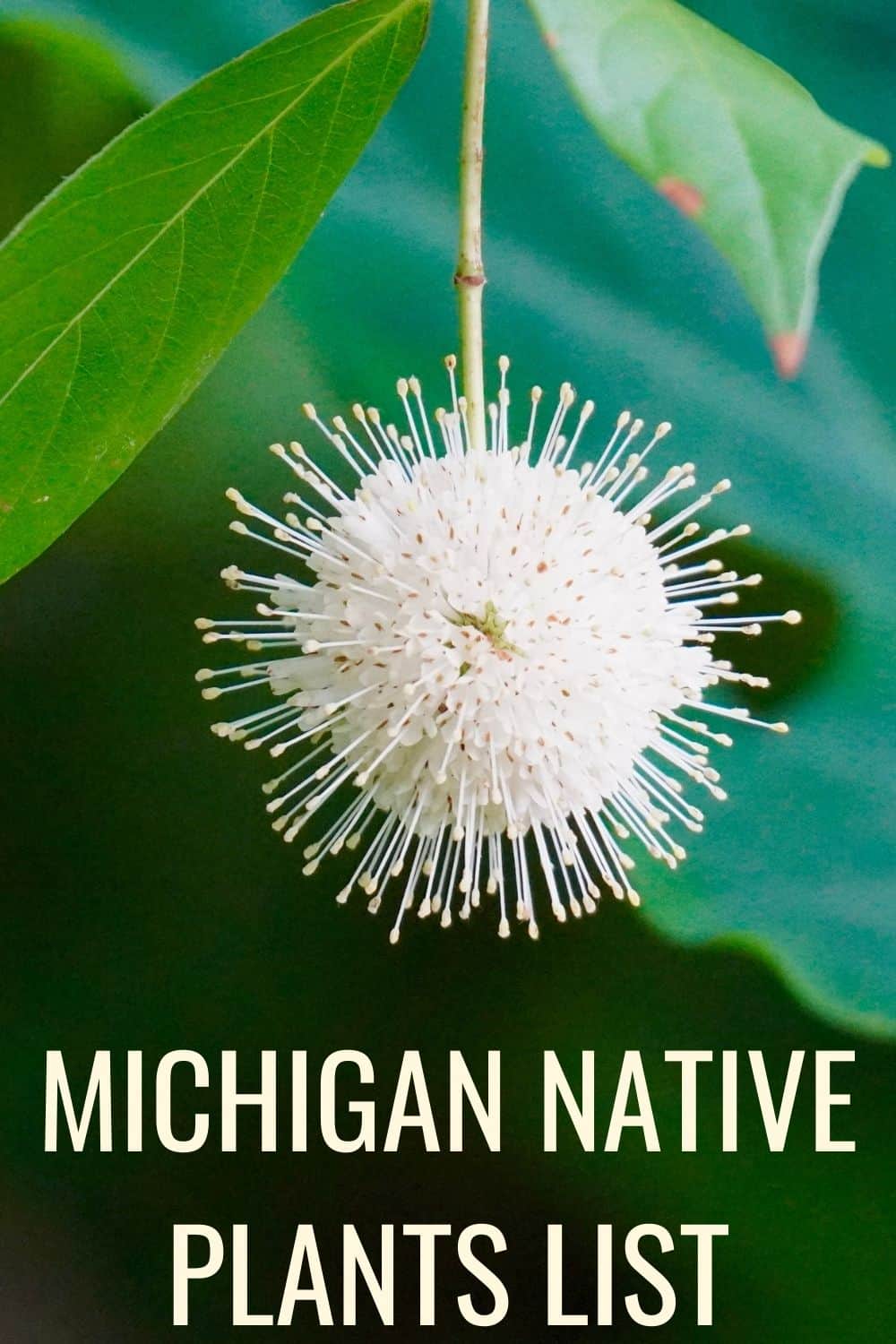

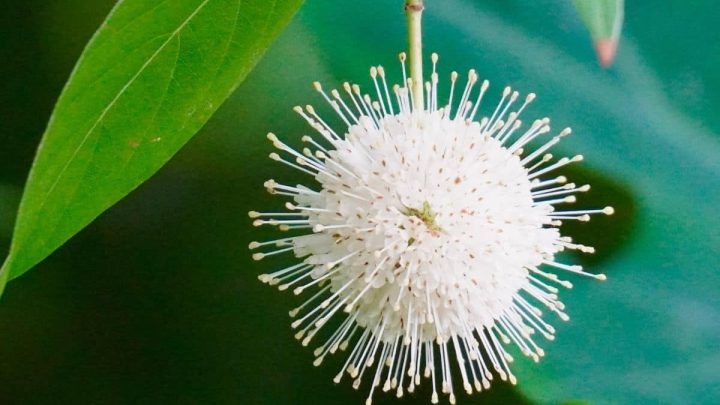











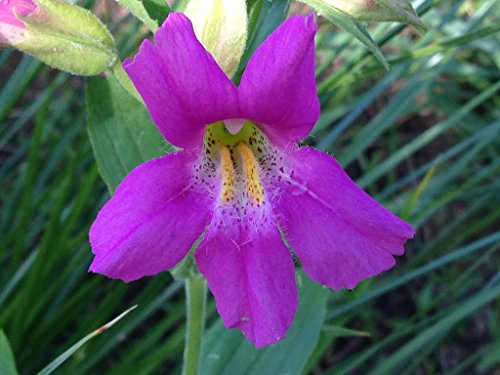


12 High-Threat Invasive Plants In Michigan (And 24 To Grow Instead)
Friday 2nd of June 2023
[…] Here’s a list of favorite Michigan native plants. […]
kathy
Thursday 4th of May 2023
Could you recommend the best native plants, shrubs, and bushes which are deer resistant?
Adriana
Friday 5th of May 2023
Kathy, when really hungry, deer will eat anything, but many plants on this list are deer resistant: yarrow, hyssop, wild columbine, poke milkweed, etc
Kentucky Native Plants List: 8 Low Maintenance Ideas For Your KY Landscape
Tuesday 14th of February 2023
[…] Michigan native plants […]
Illinois Native Plants List: 9 Garden Ideas You Can Use Now
Tuesday 14th of February 2023
[…] Michigan native plants […]
Indiana Native Plants List: 21 Low Maintenance Garden Ideas
Tuesday 14th of February 2023
[…] Michigan native plants […]